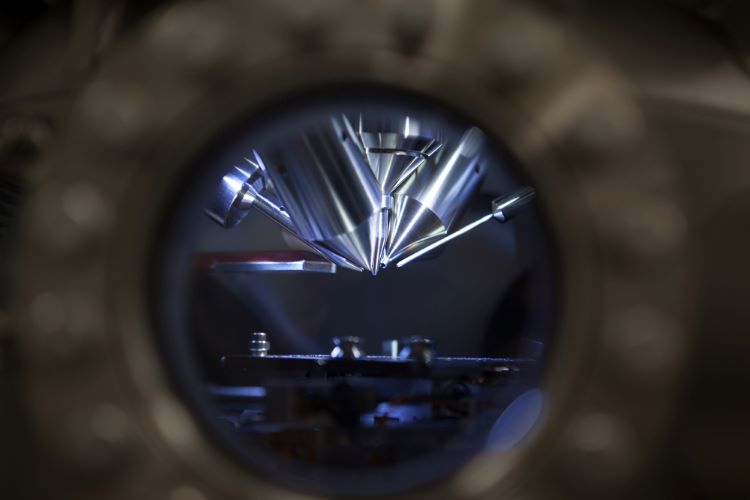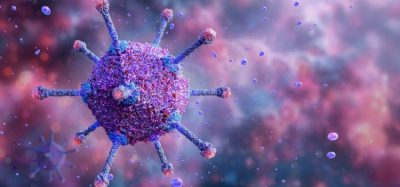A review of MALDI-TOF for microbiological identification
Posted: 10 April 2023 | Catherine Eckford (European Pharmaceutical Review) | No comments yet
Rapid identification of well-known bacterial species makes MALDI-TOF mass spectrometry a suitable alternative to conventional systems, researchers have stated.


The high reliability of matrix-assisted laser desorption/ionization (MALDI) time-of-flight (TOF) mass spectrometry (MS) systems for microbiological identification offer an alternative to serological-based methods, according to a review by researchers.
“New technologies for the accurate and rapid identification of bacteria are essential in various fields of applied microbiology. Mass spectrometry is an alternative solution for identifying and strain typing,” the authors stated. This analytic technique can analyse the mass-to-charge ratio of numerous biomolecules, such as peptides and proteins.
In MALDI-TOF, molecules in a sample are ionized using an auxiliary material (matrix) that can absorb the excess laser energy used for ionization, the authors explained. The analytes are embedded in the crystal of the matrix. This transfers the laser energy to the macromolecules of the analyte. The macromolecule-matrix complexes from the test sample are released (desorption phase). The resulting molecular ions are then delivered to the analyser under high vacuum and accelerating voltage.
Benefits of MALDI-TOF
The technique can quickly identify well-known bacterial and fungal species. Importantly, the rapid, low-cost technique has the capability of analysing a high sample volume simultaneously. It maps the unique protein pattern of microbes that contributes to characterising a wide variety of microorganisms, including bacteria, fungi and viruses.
In recent years, new protocols have appeared for directly identifying pathogenic strains from patient samples (blood, urine, faeces). The authors highlighted that this is a major milestone in healthcare applications. However, these applications only have reliable results under certain conditions — adequate cell count and appropriate separation technique, for instance.
Reliability of MALDI-TOF for bacterial identification
MALDI–TOF MS has been used to identify various microorganisms such as Gram-negative rods (eg, Escherichia coli) and Gram-positive cocci (eg, Staphylococcus aureus) and some Gram-positive rods (eg, Bacillus cereus).
Studies assessing the ability of MALDI–TOF MS to identify bacterial strains isolated from clinical samples have demonstrated the reliability of these systems.
Two popular MALDI-TOF MS systems are Bruker and Shimatzu. A 2010 study by Cherkaoui et al. evaluated 720 bacterial isolates in parallel on both devices. The MALDI-TOF MS results were compared with conventional biochemical identification tests, and discordant results were resolved with 16S rRNA gene sequencing.
The Bruker MS system gave high-confidence identification for 680 of 720 isolates (94.4 percent).
On the other hand, the Shimadzu MS showed a high-confidence identification for 639 isolates (88.8 percent). All the high-confidence MS identifications were accurate at the genus level.
A 2009 study by Eigner et al. on 1116 routine isolates representing the main bacterial groups encountered in the clinical microbiology laboratory, showed 95.2 percent correct identification by MALDI-TOF MS.
Limitations of the method
Haider et al. stated that while the system can identify a broad spectrum of bacteria, spectral interference can occur due to the presence of bacteria endospores like Bacillus species. To overcome this, 24-hour cultures should be used, the authors suggested. Pathogen fungi can be identified via MALDI-TOF mass spectra, with the contribution of processing software and spectral database of reference strain.
Though the MALDI-TOF is normally reproducible, there are instances of variable results. For example, these can be:
- The different properties and individual mass spectrometer instruments
- The matrix and other solvent content
- Preparation protocol
- Culture conditions (medium, temperature, and the age of the colony)
- The strain’s biological variability.
While MALDI-TOF can be applied to samples such as blood, urine and milk — the major limitation for wide application is the number of bacteria in these samples. Some procedures, such as the separation of blood and filtration for urine, can mitigate this. The bacterial count in the milk samples directly affects the ability of MALDI-TOF to correctly identify the bacteria.
Concluding comments
The review noted that MALDI-TOF appears suitable for identifying the microorganisms causing symptoms of microbe-based diseases. However, in some cases, it must be coupled with other analytic methods to reach sufficient results for measuring the incubation period and spread investigation.
In addition, sample preparation can be automated. This enables the metadata analysis of clinical samples. This concept includes automatic inoculation of the sample on culture media, as well as automated cultivation and growth detection of sample cultures. The researchers proposed the next aim is to have the colonies automatically picked and differentiated to the species level.
MALDI-TOF MS has only recently been introduced to microbiological diagnostics, the authors acknowledged. However, Haider et al. suggested that new developments for the system could enable “promising future applications” such as “separation techniques in typing the isolates, which would enable the acquaintance of some harmful or beneficial strains.”
Related topics
Analytical techniques, Mass Spectrometry, Microbial Detection, Microbiology, Technology









